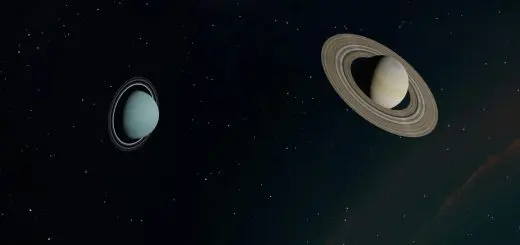Pets in Space: Animals Who’ve Traveled Beyond Earth

Looking for more amazing products? Check out our online store and explore our collection here! Happy shopping!
Before diving in, please note: This post is for informational purposes only. If you’d like to know more about how we approach topics, feel free to check out our friendly Disclaimer Page.
Hey there, amazing readers! 
We’re committed to delivering quality posts, and your support (even just sticking around despite the ads) means everything to us. So, bear with us, and thanks for helping us keep the good vibes rolling. Now, on to the fun stuff!
TRANSLATE BUTTON AT THE END OF THE ARTICLE
A Quick Overview
When we think about space exploration, our minds often drift to astronauts in sleek suits or cutting-edge technology.
But did you know that animals have played a crucial role in unraveling the mysteries of the cosmos?
From dogs to turtles and even frogs, these brave little explorers have paved the way for human space travel.
In this article, we’ll journey through time to discover the furry, scaly, and sometimes slimy friends who have ventured beyond our planet.
Buckle up; it’s going to be a fun ride!
A Journey Beyond: The First Animals in Space
The story of animals in space begins in the 1940s and 1950s.
During this period, the space race was heating up, and scientists needed to test the effects of space travel on living beings.
Early flights were often conducted by the U.S. and the Soviet Union, each eager to achieve pioneering milestones.
First Creatures: The first animals to go into space were fruit flies.
In 1947, they were launched aboard a V-2 rocket by the U.S.
Air Force.
These little critters helped scientists understand the effects of radiation exposure in high altitudes.
Rats and Mice: After the flies, rats and mice were sent on various missions.
Their biological responses to weightlessness provided valuable insights into how living organisms react to the environment of space.
The Atmosphere Testers: Animals were also essential for understanding how to keep astronauts safe.
By studying their physiological changes, scientists could develop better life-support systems.
Many of these early missions were short, but they laid the groundwork for more ambitious projects.
The success of these missions helped spark a surge of interest in space exploration, leading us to the iconic stories of our next furry friends.
Laika the Brave: The First Dog to Orbit Earth
Among the most famous of space travelers is Laika, a stray dog from Moscow.
Laika’s journey in 1957 aboard the Soviet spacecraft Sputnik 2 captured the hearts of many.
Selection Process: Laika was chosen because of her adaptability and calm demeanor.
Engineers believed she could withstand the pressures of space travel.
The Launch: On November 3, 1957, Laika became the first animal to orbit Earth.
While she didn’t survive the mission, her journey provided invaluable data about the effects of weightlessness and radiation on living beings.
Legacy: Laika’s mission highlighted the ethical considerations of using animals in research.
Discover "Dog Care: Learning How to Care for Your Furry Friend
"
Today, she is remembered as a pioneer and a symbol of the sacrifices made for science.
Laika’s story shows how far we’ve come in animal welfare and space research.
While her journey was bittersweet, she opened doors for future missions and paved the way for human travel into space.
Monkeys in Space: Pioneers of Primate Exploration
Primates have also had their share of adventures among the stars.
The U.S. sent several monkeys, including Albert II and Gordo, on various space missions during the 1950s.
Albert I and II: Albert I was the first monkey sent into space in 1948, but he did not survive the flight.
However, Albert II made it into space in 1949 and became the first monkey to reach the edge of space, though he sadly did not return.
Gordo’s Journey: Gordo, another monkey, flew on a Jupiter rocket in 1958.
He experienced about five minutes of weightlessness but did not survive the re-entry.
His mission provided critical data on how living organisms handle the conditions of re-entry.
The Impact: These early missions were instrumental in understanding the biological impacts of space travel, leading to improvements in safety protocols for human astronauts.
Primates have long been our closest relatives, and their journeys into space helped scientists understand not just the mechanics of space travel, but also how living beings might behave in an alien environment.
The Feline Frontier: Cats Who’ve Visited Space
While dogs and monkeys often steal the spotlight, cats have also had their moment in the stars.
The most notable feline space traveler was Félicette, a black and white cat launched by France in 1963.
Selection: Félicette was chosen for her gentle temperament and adaptability.
She was part of a project aimed at studying the effects of space travel on biological systems.
The Voyage: On October 18, 1963, Félicette was launched into suborbital space.
She experienced about 15 minutes of weightlessness before safely returning to Earth in a capsule.
Scientific Contributions: Electrodes implanted in her brain allowed scientists to monitor her neural activity during the flight.
Her mission provided valuable insights into how living beings might cope with the conditions of space.
Félicette’s journey reminds us that all creatures, big or small, contribute to our understanding of the universe.
Today, she is often referred to as "the first cat in space," and her legacy continues to inspire both cat lovers and space enthusiasts alike.
Tortoises in Orbit: Slow and Steady Travels
Did you know that tortoises also made their way into space?
The Soviet Union launched tortoises aboard the Zond 5 mission in 1968, making them the first living beings to orbit the Moon.
Why Tortoises? Tortoises were chosen for their hardiness and ability to withstand long periods without food or water.
This made them perfect candidates for testing the challenges of space travel.
The Mission: Zond 5 orbited the Moon and returned to Earth, successfully landing in the Indian Ocean.
Remarkably, the tortoises survived the journey.
Scientific Findings: Their flight provided crucial information on how living organisms can endure long-duration space travel.
This knowledge was invaluable for planning future manned missions.
The tortoise’s journey is a testament to perseverance and resilience.
It also reminds us that exploration comes in all shapes and sizes!
From Fish to Frogs: Aquatic Creatures in Space
Space travel isn’t limited to land animals.
Aquatic creatures have also taken the plunge into the cosmos.
Goldfish and frogs have been launched into space for scientific exploration.
Goldfish Adventures: In 1973, NASA sent goldfish aboard a Skylab mission.
Scientists studied their behavior in a weightless environment, observing how they adapted to living without a gravitational pull.
Frogs in Space: In the 1970s, NASA also sent frogs into space.
These amphibious travelers helped researchers understand the effects of microgravity on movement and coordination.
Amazing Adaptations: Each of these aquatic missions revealed surprising insights into how different species adapt to environments vastly different from their own.
These water-loving creatures remind us that life can thrive in a variety of conditions, even in the vast emptiness of space.
The Role of Animals in Space Research and Discovery
Animals have played a foundational role in the history of space exploration.
Their contributions go beyond mere test subjects; they have been vital in ensuring the safety and success of human space missions.
Testing Equipment: Before humans ventured into the unknown, animals were used to test life-support systems, rocket designs, and safety protocols.
Biological Research: Animal research provided scientists with data on the physiological impacts of spaceflight, including muscle atrophy, bone loss, and fluid shifts in the body.
Behavioral Studies: Observing how animals behave in zero gravity helped researchers understand the psychological effects of long-duration space missions.
Animals have been unsung heroes in the journey to explore the cosmos.
Their sacrifices paved the way for advancements that benefit both human astronauts and planetary science.
Space Stations: Homes Away from Home for Pets
As we move into the era of longer missions, the idea of taking pets into space has gained traction.
Can you imagine a cat lounging in a space station?
International Space Station (ISS): While there haven’t been any pets on the ISS yet, the station could offer a unique environment for animal companions.
Imagine the joy of having a furry friend to ease the loneliness of long missions.
Research Opportunities: Future missions might include pets as part of psychological studies.
Their presence could enhance the mental well-being of astronauts during extended stays in space.
Potential Challenges: However, bringing animals into space comes with challenges, including ensuring their nutrition, physical health, and emotional well-being.
The prospect of having pets in space is an exciting thought.
It shows how we continue to explore new horizons in our understanding of life beyond Earth.
Understanding Zero Gravity: How Pets Adapt in Space
Animals, like humans, experience significant changes in a zero-gravity environment.
Understanding how they adapt is crucial for future missions.
Movement Patterns: In space, animals must learn to navigate without gravity.
Their natural instincts often get turned upside down—literally!
For instance, fish swim differently, and frogs may hop in unique ways.
Behavioral Changes: Animals may initially exhibit stress due to disorientation.
However, many adapt surprisingly quickly.
For example, studies show that goldfish can learn to swim effectively in a microgravity environment.
Health Monitoring: Scientists continually monitor the health of space animals, observing how their bodies respond to the challenges of space travel.
This research is vital for planning future human missions.
Exploring how pets adapt to life in space could lead to advancements in both animal care and human spaceflight.
Fun Facts About Space Pets You Might Not Know!
Let’s lighten things up with some quirky tidbits about space pets!
Did you know?
First Living Organisms: The first living organisms in space were bacteria, sent on a V-2 rocket by the U.S. in 1946.
They paved the way for understanding microbial life in space.
Monkeys and Mice: Over 30 species of animals have been launched into space, including monkeys, mice, dogs, cats, frogs, and even newts.
The Unbelievable Hibernation: Some animals, like tardigrades, can survive extreme conditions, including the vacuum of space and radiation.
They are nature’s ultimate survivors!
Bouncing Bunnies: In 2019, NASA even tested rabbits in space!
They looked at how the rabbits’ bones and muscles changed during microgravity.
These fun facts highlight the fascinating world of animal space travel and remind us that we’re still learning about the impact of space on living creatures.
The Legacy of Space Animals: Impact on Science
The legacy of animals in space goes beyond their immediate contributions.
Their journeys have had a profound effect on science and our understanding of life itself.
Ethical Considerations: The use of animals in space research has led to discussions around ethics and treatment of living beings in scientific studies.
This has resulted in stricter regulations and better care for research animals.
Scientific Advancements: Data from animal missions have contributed to various fields, including medicine, biology, and aerospace engineering.
Their experiences have reshaped our understanding of human physiology in space.
Inspiring Future Generations: The stories of these brave animals inspire new generations of scientists and explorers.
They remind us that curiosity and exploration are part of what makes us human.
Recognizing the contributions of these little pioneers helps us appreciate the delicate balance between exploration and compassion.
Future of Pets in Space: Who Will Join the Journey?
Looking ahead, who knows what the future holds for pets in space?
As we venture further into the cosmos, the possibilities are endless.
Longer Missions: As we plan more extended missions to Mars and beyond, the idea of having pets aboard becomes more feasible.
They could provide comfort and companionship to astronauts.
Species Selection: Who might join the ranks of space travelers next?
Perhaps rabbits, guinea pigs, or even birds will take their turn exploring the final frontier.
Technological Innovations: Advances in technology could make it easier to care for and monitor pets in space, ensuring their well-being throughout the journey.
The future of pets in space is filled with excitement and curiosity.
As we continue to explore the universe, we may just find ourselves sharing it with our beloved animal companions.
Conclusion
From Laika the dog to the goldfish in Skylab, animals have played a vital role in our understanding of space.
They remind us that exploration isn’t just about technology; it’s also about the lives affected along the way.
As we look toward the stars, we can’t help but wonder who else might join us on this incredible journey.
Will we one day see our furry and scaly friends floating among the stars?
Only time will tell, but one thing is certain: the legacy of our brave animal companions will continue to inspire exploration for generations to come.

The Enlightenment Journey is a remarkable collection of writings authored by a distinguished group of experts in the fields of spirituality, new age, and esoteric knowledge.
This anthology features a diverse assembly of well-experienced authors who bring their profound insights and credible perspectives to the forefront.
Each contributor possesses a wealth of knowledge and wisdom, making them authorities in their respective domains.
Together, they offer readers a transformative journey into the realms of spiritual growth, self-discovery, and esoteric enlightenment.
The Enlightenment Journey is a testament to the collective expertise of these luminaries, providing readers with a rich tapestry of ideas and information to illuminate their spiritual path.
Our Diverse Expertise
While our primary focus is on spirituality and esotericism, we are equally passionate about exploring a wide range of other topics and niches 

To ensure we provide the most accurate and valuable insights, we collaborate with trusted experts in their respective domains 
Our blog originally focused on spirituality and metaphysics, but we’ve since expanded to cover a wide range of niches. Don’t worry—we continue to publish a lot of articles on spirituality! Frequently visit our blog to explore our diverse content and stay tuned for more insightful reads.
Hey there, amazing reader! 
Check out our store here and take a peek at some of our featured products below! Thanks for being awesome!










